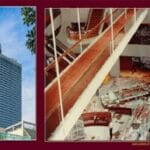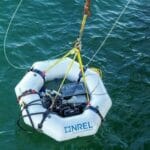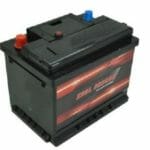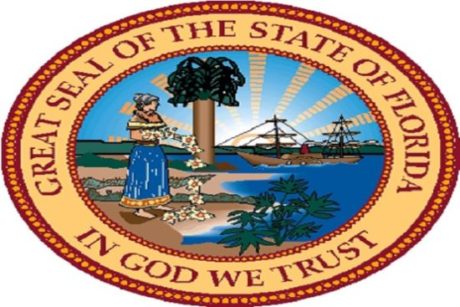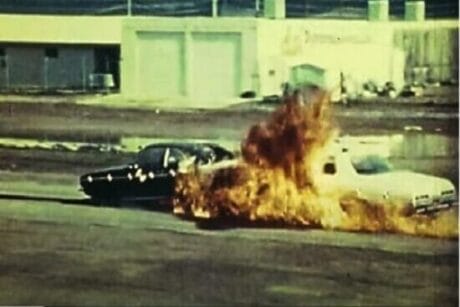No products in the cart.
5
- Webinar No: WBNR 1165
- PDH Units: 2
Webinar No: WBNR 1165
PDH Units: 2
5
- Webinar No: WBNR 1165
- PDH Units: 2
Webinar No: WBNR 1165
PDH Units: 2
Intended Audience: All Engineers
Credits: 2 PDH Units
When: Wednesday 4/12. 2 - 4 pm ET
We promise you a very special webinar . This is not your boring ethics webinar. We are very proud to bring this webinar to you. The space shuttle Challenger with seven crew members broke up in the sky, 73 seconds after its launch on January 28, 1986. All crew members perished. The cause of the failure was one of the O-rings sealing a joint in one of the rocket boosters, due to freezing temperature, was not flexible enough to seal the joint and let the propellants exit the rocket booster. The resulting flame melted the nearby External Tank containing hydrogen and oxygen tanks. The External Tank exploded and caused the disintegration of the space shuttle Challenger. The tragic catastrophe could have been avoided if NASA officials and managers in Morton Thiokol - the manufacturer of the rocket boosters - had not overruled the objections from engineers in charge of the O-rings that the space shuttle should not be launched in the freezing temperatures. They insisted the O-rings will lose their flexibility in freezing temperatures and will not be able to seal the joints. Tragically they were right. The webinar, after a summary of the structure of the space shuttle, presents the engineering aspects of what caused the explosion and disintegration of the space shuttle Challenger. Then Dr. Astaneh will focus on the behavior of managers and engineers directly involved in the design and manufacturing of the O-rings and the events leading to the approval of the launch in the freezing temperatures. The first canon of the Code of Ethics for Engineers states that Engineers, in the fulfillment of their professional duties, shall “Hold paramount the safety, health, and welfare of the public.” In this tragedy, not only the managers involved in the launch grossly violated the first canon, but by putting unbearable pressure on the engineers, working for them, forced them to go along with the scheduled launch even though some like Roger Boisjoly were strongly against the launch during freezing temperatures. The webinar includes a discussion of how engineers and managers can work together to hold safety paramount in every step of the project. Then the webinar discusses the tools that are available to engineers, including whistleblowing, to prevent safety-related disasters. The tragic explosion of the Shuttle Challenger during the launch will be used to show how not “holding safety paramount” by engineers and their managers resulted in the avoidable tragic failure and loss of lives of astronauts. Please note: this “Live & Interactive” ethics webinar is intended to fulfill the annual ethics course requirements for most professional certifications and registrations. References and Recommended Further Readings:
- Code of Ethics, National Society of Professional Engineers (NSPE).
- NSPE Ethics Guide, National Society of Professional Engineers.
- ASME "Code of Ethics of Engineers," American Society of Mechanical Engineers.
- ASCE Code of ethics
- Ethics, Technology, and Engineering, a book by Ibo van de Poel and Lambèr Royakkers, Wily-Blackwell, 2011. (Amazon page)
- Concepts and Cases-Engineering Ethics, a book by Charles E. Harris et al., published by Cengage, 2019. (Amazon page)
- The Ethical Executive, a 2010 book by, Stanford Business Books. (Amazon page)
- Truth, Lies, and O-Rings: Inside the Space Shuttle Challenger Disaster, by Allan J. McDonald, A.J., and James R. Hansen, University Press of Florida. (Amazon page)
- Space Shuttle Case Studies: Challenger and Columbia, by Scott L. Post, (2014) 121st ASEE Annual Conference &Exposition, Indianapolis, IN.
- Report of the Presidential Commission on the Space Shuttle Challenger Accident (1986). Available at NASA History Office
- Report of the Advisory Committee On the Future of the U.S. Space Program. December 1990.
- Investigation of the Challenger Accident, REPORT OF THE COMMITTEE ON SCIENCE AND TECHNOLOGY, HOUSE OF REPRESENTATIVES, NINETY-NINTH CONGRESS, SECOND SESSION, 1986.
Date: Wednesday. April 12. 2023. Starts: 2 - 4 pm ET Credits: 2 PDH Units
Learning Objectives:
At the successful conclusion of this webinar, you will learn the following knowledge and skills:- Why “holding safety, health and well-being” of public is so important in preventing disasters.
- How not holding “safety paramount” was the main cause of tragic explosion of the Shuttle Challenger during its lunch.
- How engineers can convince managers to also “hold safety paramount.”
- How space shuttle Challenger disaster could have been prevented if the managers considered “safety” to be of paramount importance.
- How “group think” can blind engineers to “hold safety paramount.”
- How whistleblowing can prevent some engineering disasters.
- The important concept of “preventive ethics,” proposed by Charles E. Harris Jr. in 1995.
Special Webinar Instructions
After payment, please visit this webinar page, click "Start Course" and fill out the Webinar Registration Form. You'll receive email notification and details on how to join the webinar. You will then be able to access the webinar slides, test your system and receive webinar reminders. After completing the webinar requirements, your certificate of completion will be saved and available for download in your profile. We value your feedback! Please rate this webinar after completion.Group Discounts Available
Course Reviews
5
5
3 ratings - 5 stars0
- 4 stars0
- 3 stars0
- 2 stars0
- 1 stars0
No Reviews found for this course.
Once completed, your order and certificate of completion will be available in your profile when you’re logged in to the site.



